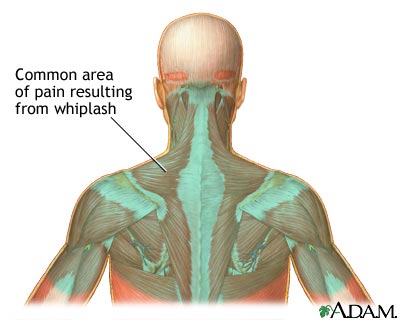Whiplash: Causes, Symptoms, and Treatments
What is Whiplash? Whiplash is a neck strain injury that is usually a result from a motor vehicle accident involving a car that is not moving and is hit by another vehicle from behind. With impact from the rear, the neck is forced into a hyperextended (backward) position while the seat pushes the torso forward and the head and neck backwards. Shortly after, the head and neck are pushed into a hyperflexed (forward) position. Although whiplash is usually associated with rear-end car accidents, any impact that causes your neck to jerk back and forth can cause a neck strain. The sudden force can cause muscles and tendons to stretch and tear, which results in a painful condition that can become chronic if not treated.
Whiplash Symptoms: Symptoms can range from mildly painful to excruciating pain, depending on the case.
Symptoms may include:
- Headache
- Stiff neck, decreased range in motion
- Neck pain
- Shoulder or upper back pain
- Neck instability
- Radiating tingling, weakness, numbness
Treatment options for whiplash:
At home: For the first few days following your accident, make sure to take it easy on yourself. Try to avoid activities that cause any strain on your neck. You might notice the pain increases at nighttime. This is because your head is bearing weight on your neck throughout the day. Rest and apply ice for the first 2 days. Then, apply heat and ice alternately a few days after the injury has occurred. Over-the-counter medications such as Advil, Aleve, Motrin, and acetaminophen (Tylenol) can also block pain receptors. Patients often wear a soft collar following a whiplash injury. We advise against wearing a soft collar, as it immobilizes the neck causing the muscles to weaken and become more problematic.
Conservative medical care: For at least 6 weeks following an injury, patients with whiplash should try conservative care such as:
- Physical Therapy
- Prescription pain medication
- Massage therapy
- Injections

